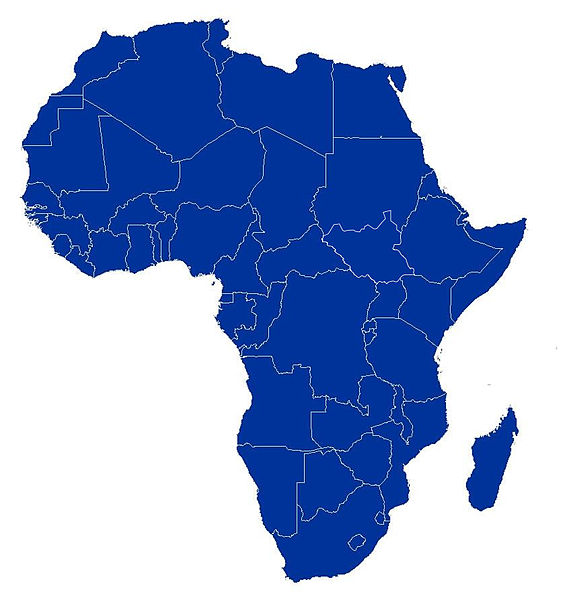While the investigation into the Ebola virus disease outbreak in the northern part of the Democratic Republic of the Congo (DRC) continues, several African countries discussed and activated their preparedness plans or increased vigilance at their borders in response to the DRC outbreak.
Even though the DRC has successfully contained previous EVD outbreaks, and has capacity and resources to respond appropriately, the following actions have been taken in Nigeria, Kenya and South Africa.

Nigeria
Nigeria’s response to Ebola in 2014 was recognized globally for its speed and efficiency. NCDC and its partners will leverage this successful in its preparedness to prevent, detect and respond to the unlikely situation of the introduction of the virus to Nigeria.
After formal outbreak declaration last week, the Nigeria Centre for Disease Control (NCDC) convened an emergency meeting with representatives from the Department of Public Health and Port Health Services of the Federal Ministry of Health, World Health Organisation (WHO), The United Nations Children’s Fund (UNICEF), US-Centers for Disease Control, the African Field Epidemiology Network and the University of Maryland Baltimore to guide the country’s preparedness activities.
At the meeting chaired by the Chief Executive Officer of the NCDC, Dr. Chikwe Ihekweazu, an Ebola Preparedness Working Group (EPWG) was set up to lead on the coordination of the immediate risk assessment of the situation in the DRC and coordinate the strengthening of prevention and preparedness for any potential introduction of the virus into Nigeria.
The risk of introduction of the Ebola virus into Nigeria is considered to be highest through its air and land borders. Therefore, Port Health Authorities have been advised to intensify existing screening procedures at all ports of entry with first responder teams being put on alert. In addition, there will be an increased focus on reinforcing principles of infection prevention and control to all healthcare workers across the country.
The NCDC led Ebola Preparedness Working Group will provide regular updates as necessary on the outbreak in the DRC and provide information on how to protect the country from Ebola.
Kenya
The Kenya Ministry of Health had put in place strategic measures in place following the outbreak of Ebola Virus in West Africa in 2015/2016.
These and the following additional measures have been undertaken for the current DRC outbreak:
1. Released an alert to health workers countrywide regarding the outbreak events in DRC and therefore need to have a high index of suspicion.
2. Reactivated the Rapid Response teams for enhanced surveillance and follow up of travelers with elevated body temperatures and asymptomatic cases with history of travel from/through DRC
3. Strengthened Screening and surveillance of travelers from/through DRC at all points of entry: All persons with travel history from and /or through DRC, especially in affected area will be required to provide minimum package of information to guide investigations. This will include and not limited to the following; personal details, exact location of origin/transit, history of contact with potential EVD cases, presence of any suggestive signs and symptoms of EVD and declaration of contact while in the country) will be collected to aid personal risk assessment and daily follow-up for 21 days if they will still be resident in the country.
4. Information on EVD will be provided to both incoming and outgoing travelers at all points of entry.
5. Holding rooms at Jomo Kenyatta International Airport have been reactivated to isolate EVD suspected cases identified to be high risk while awaiting possible transfer to isolation facilities after thorough assessment.
6. The diagnostic services at KEMRI, Isolation/treatment centres at Kenyatta National Hospital and Regional facilities have been put on high alert to enhance capacity to detect and response in order to effectively care for suspected cases of Ebola in the Country.
7. The Ministry has an adequate stock of Personal Protective Equipment (PPE) which are stored in strategic regional hospitals for use if needed. These include at least 5,000 special full body suits used in situations of highly infectious material.
8. The Ministry has reactivated the multiagency Outbreak Coordination Committee comprising of public health experts in Government and development partners to assess the situation at the country, regional and global and advice on possible response activities.
South Africa
While health officials in South Africa say there is a very low risk of transmission to the country, South African Emergency Departments and clinicians are advised to be on the alert for cases of fever and/or hemorrhagic symptoms amongst returning travelers from the area. Malaria remains the commonest and most important cause of fever amongst persons returning from African destinations. South African Port Health authorities have been informed and continue to screen persons who enter via air ports for fever. No travel restrictions are in place.
Related:
- European Commissioner for Humanitarian Aid and Crisis Management statement on Ebola outbreak in DRC
- Measles outbreak in Tajikistan: Sharp increase in new cases is expected to continue
- Tickborne diseases: New Hampshire health officials remind people to take precautions
- WorldPride Madrid 2017: European officials say STI risk is moderate to high


2 thoughts on “Ebola: African countries activate response plans”